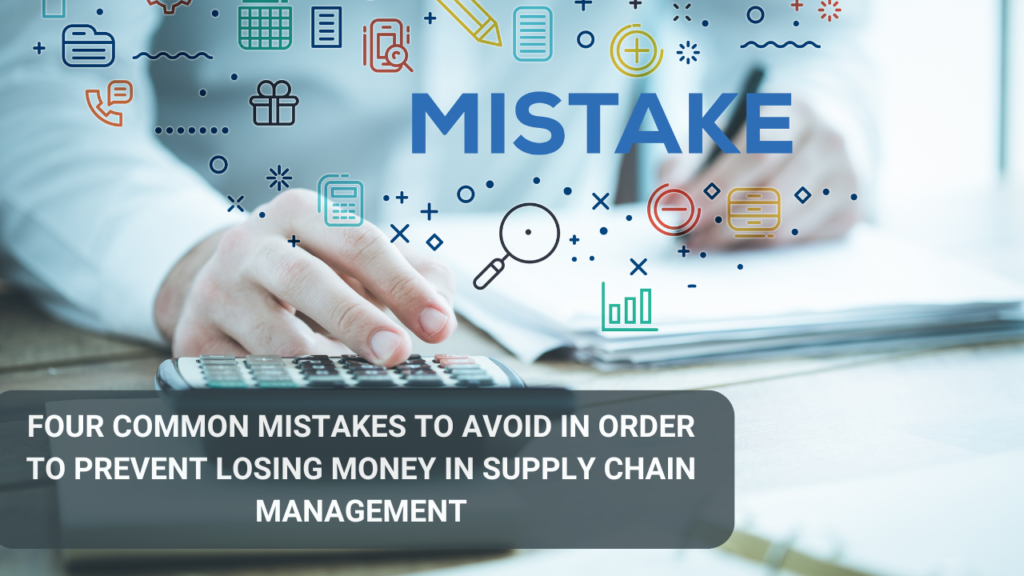1. Neglecting Data and KPIs
One of the biggest mistakes companies make is failing to collect and analyze relevant data about their supply chain operations. Without reliable data and key performance indicators (KPIs), it’s nearly impossible to identify inefficiencies and make informed decisions to improve the supply chain.

Some important supply chain KPIs to track include cost per order processed, cost per order handled, fill rates and fulfillment times, cost per unit delivered, and average order value. These metrics provide visibility into where money is being lost due to things like excessive processing costs, inventory issues, or delivery problems. By focusing on the right KPIs, companies can pinpoint areas that need optimization.
For example, a company may discover through their KPI data that their average order fulfillment time is much longer than their competitors. This could be costing them customers and sales. By analyzing the root causes, such as delays in the warehouse or with carriers, the company can implement process improvements to speed up order fulfillment and reduce those unnecessary costs.
2. Failing to Plan for the Future
Another common mistake is neglecting to plan for future changes and growth in the business. If a company’s supply chain strategy is not adaptable, it can quickly become outdated and inefficient as the business evolves.
It’s important to have contingency plans in place to deal with potential supply chain disruptions, such as supplier issues, transportation delays, or unexpected demand changes. Being proactive about risk management can help minimize the financial impact when problems do arise.
Companies should also design their supply chains with their long-term business goals in mind, not just their current needs. As a company grows and introduces new products, the supply chain may need to scale and shift to support those changes. Failing to anticipate those future requirements can lead to costly supply chain inefficiencies down the road.
For instance, a manufacturer may outgrow their current warehouse and distribution network as sales expand into new regions. If they haven’t planned ahead, the costs of hastily expanding their logistics operations could eat into their profits.
3. Neglecting to Optimize Business Processes
Over time, a company’s supply chain processes can become outdated and inefficient, especially as the business grows and evolves. Failing to continuously optimize those processes is a recipe for losing money.
One key step is breaking down silos between different teams involved in supply chain management. When departments operate in isolation, it creates coordination problems and missed opportunities for efficiency. Improving cross-functional collaboration and transparency is crucial.
Companies should also focus on increasing end-to-end supply chain visibility. This allows for better data collection, risk management, and process improvements across the entire supply chain. Visibility also helps identify areas where costs can be reduced, such as by consolidating shipments or renegotiating carrier rates.
For example, a retailer may discover through supply chain visibility that a significant portion of their transportation costs are due to expedited shipping for certain products. By working with suppliers to improve demand forecasting, they could reduce the need for costly expedited services.
4. Letting the Process Get Messy
Over time, supply chains can become overly complex and “messy” as companies add more partners, products, and processes. This lack of supply chain optimization is a major source of unnecessary costs.
Perhaps a company has accumulated too many suppliers, making it difficult to manage relationships and negotiate favorable terms. Or their inventory management has become disorganized, leading to excess stock or stockouts. These types of inefficiencies bleed money from the business.
The solution is to regularly review and streamline supply chain operations. This may involve consolidating suppliers, automating manual processes, or implementing new technologies like a transportation management system (TMS). The goal is to create a more lean, efficient, and transparent supply chain.
One common example is companies that rely on a large number of small parcel carriers. By analyzing their shipping data and consolidating to fewer, larger carriers, they can often negotiate better rates and improve delivery performance.




